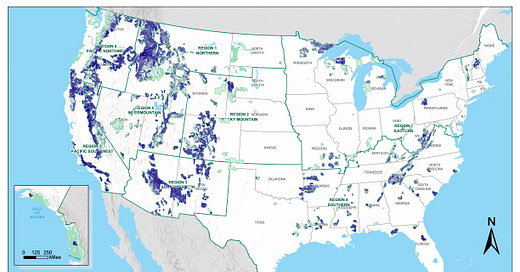Here’s All The Forests Trump Plans To Cut Down
Emergency order opens up 59 percent of American forests to logging. But how much will we actually lose?
“We’re facing a national forest emergency," stated U.S. Department of Agriculture Secretary Brooke Rollins last week, announcing her order to expedite timber permitting across 112 million acres of national forest. “We have an abundance of timber at high risk of wildfires in our National Forests.” So the plan, of course, is to skip the process that enables logging projects to reduce wildfire risk, and just proceed willy nilly.
The map up top was produced by USDA to accompany Rollins’ order. Here’s a link to the original version if you’d like to see it in the highest resolution possible. Green areas are forest boundaries, blue stuff is the 112 million acres that will now be made available to logging, without the usual permitting process.
Taking an initial look at that map, it’s easy to come to the conclusion that what Rollins is doing is essential…
Keep reading with a 7-day free trial
Subscribe to Wes Siler’s Newsletter to keep reading this post and get 7 days of free access to the full post archives.




